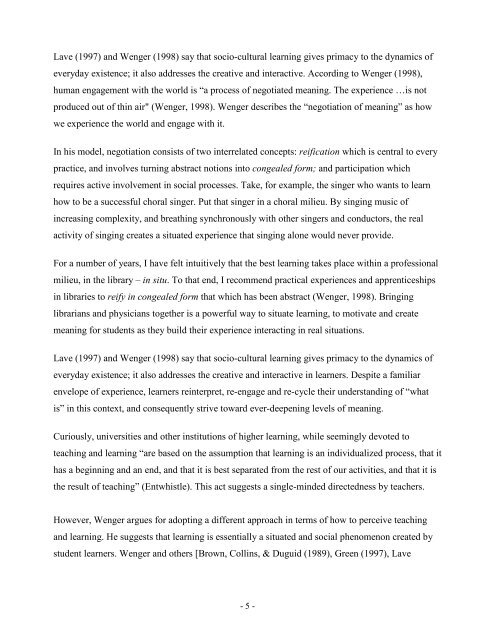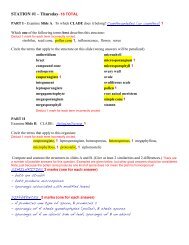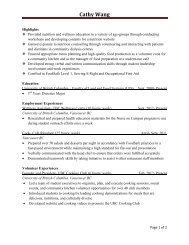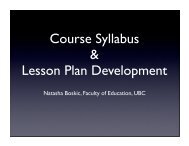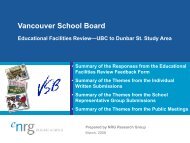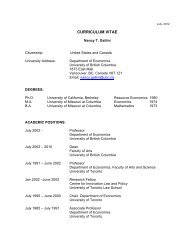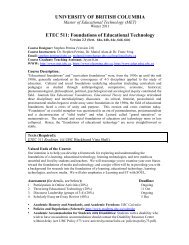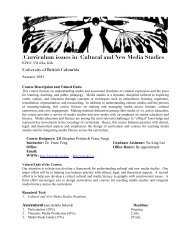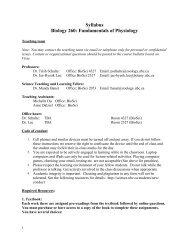adult learning theories - UBC Blogs - University of British Columbia
adult learning theories - UBC Blogs - University of British Columbia
adult learning theories - UBC Blogs - University of British Columbia
- No tags were found...
You also want an ePaper? Increase the reach of your titles
YUMPU automatically turns print PDFs into web optimized ePapers that Google loves.
Lave (1997) and Wenger (1998) say that socio-cultural <strong>learning</strong> gives primacy to the dynamics <strong>of</strong>everyday existence; it also addresses the creative and interactive. According to Wenger (1998),human engagement with the world is “a process <strong>of</strong> negotiated meaning. The experience …is notproduced out <strong>of</strong> thin air" (Wenger, 1998). Wenger describes the “negotiation <strong>of</strong> meaning” as howwe experience the world and engage with it.In his model, negotiation consists <strong>of</strong> two interrelated concepts: reification which is central to everypractice, and involves turning abstract notions into congealed form; and participation whichrequires active involvement in social processes. Take, for example, the singer who wants to learnhow to be a successful choral singer. Put that singer in a choral milieu. By singing music <strong>of</strong>increasing complexity, and breathing synchronously with other singers and conductors, the realactivity <strong>of</strong> singing creates a situated experience that singing alone would never provide.For a number <strong>of</strong> years, I have felt intuitively that the best <strong>learning</strong> takes place within a pr<strong>of</strong>essionalmilieu, in the library – in situ. To that end, I recommend practical experiences and apprenticeshipsin libraries to reify in congealed form that which has been abstract (Wenger, 1998). Bringinglibrarians and physicians together is a powerful way to situate <strong>learning</strong>, to motivate and createmeaning for students as they build their experience interacting in real situations.Lave (1997) and Wenger (1998) say that socio-cultural <strong>learning</strong> gives primacy to the dynamics <strong>of</strong>everyday existence; it also addresses the creative and interactive in learners. Despite a familiarenvelope <strong>of</strong> experience, learners reinterpret, re-engage and re-cycle their understanding <strong>of</strong> “whatis” in this context, and consequently strive toward ever-deepening levels <strong>of</strong> meaning.Curiously, universities and other institutions <strong>of</strong> higher <strong>learning</strong>, while seemingly devoted toteaching and <strong>learning</strong> “are based on the assumption that <strong>learning</strong> is an individualized process, that ithas a beginning and an end, and that it is best separated from the rest <strong>of</strong> our activities, and that it isthe result <strong>of</strong> teaching” (Entwhistle). This act suggests a single-minded directedness by teachers.However, Wenger argues for adopting a different approach in terms <strong>of</strong> how to perceive teachingand <strong>learning</strong>. He suggests that <strong>learning</strong> is essentially a situated and social phenomenon created bystudent learners. Wenger and others [Brown, Collins, & Duguid (1989), Green (1997), Lave- 5 -


